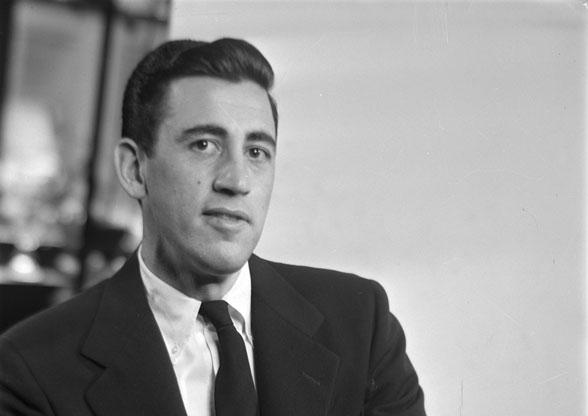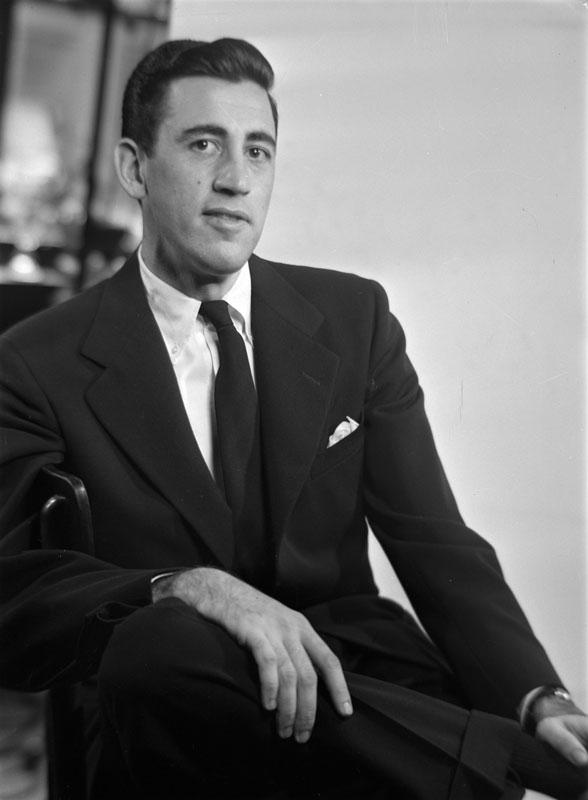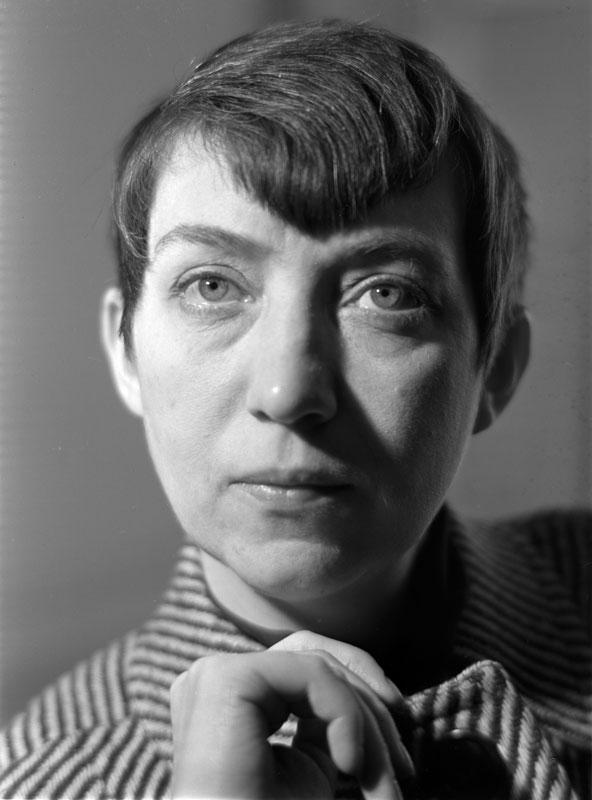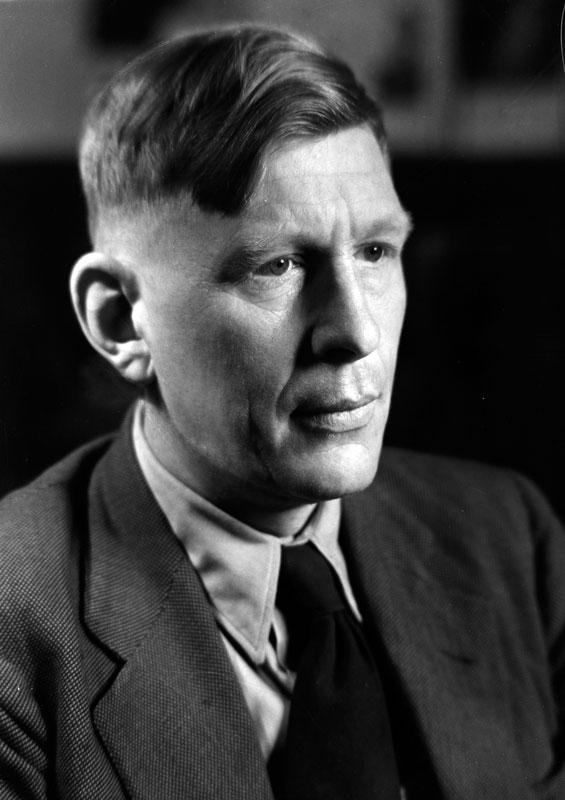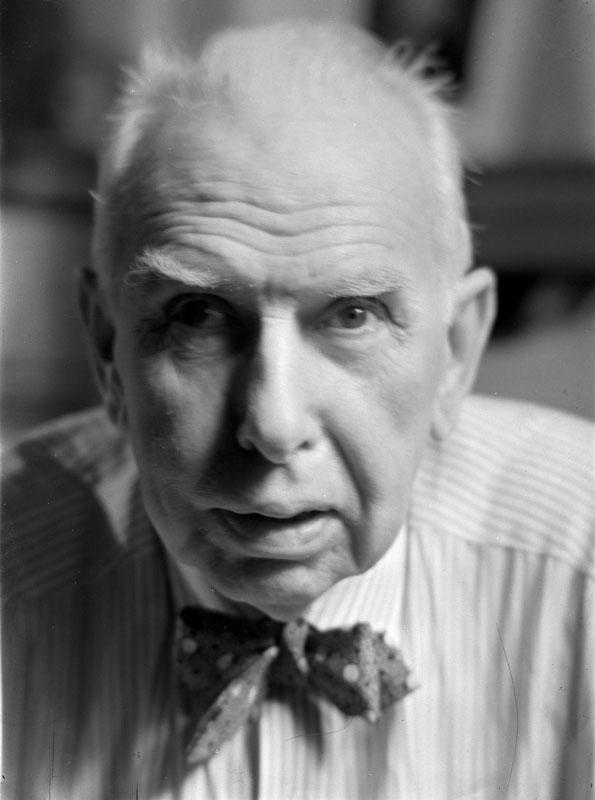Lotte Jacobi, famously photographed Salinger, Kafka, and Einstein
Lotte Jacobi photographed many mid-century authors, including the famously reclusive J. D. Salinger
Ask any bibliophile what images come to mind when The Catcher in the Rye by J. D. Salinger is mentioned, and a common thread will weave through the answer. First, the striking jacket design by E. Michael Mitchell with its bold pen strokes and deep red color. Then, the author photo of a serious young man with dark hair and onyx eyes staring off into the distance, tie knotted tightly, looking much like his protagonist Holden Caulfield was described in the jacket copy as “too simple and too complex.” If one looks closely, in very small, very light type in the left-hand corner of the back cover of the dust jacket there is a credit: “Photo by Lotte Jacobi.”
Credit: The University of New Hampshire. Used with permission.
This was not Lotte Jacobi’s first author photo, nor her last. But it was undoubtedly one of her best known thanks to Salinger’s subsequent notoriety for avoiding cameras at any cost. Salinger’s centennial—he was born on January 1, 1919—will surely put Jacobi’s image in the spotlight once again, as it captures him at the beginning of his career, before we were left with only paparazzi snapshots of the famously reclusive author. So who was the woman behind the lens?
Johanna Alexandra “Lotte” Jacobi was born in 1896 into a family of photographers in Germany, and there was never a doubt as to what her profession would be. After years of helping to run the family studio while working on her own portrait and documentary photography interests, Jacobi moved to New York City in 1935 with her young son and her sister, Ruth, where the sisters opened a photography studio together (although Ruth left the business shortly after). In 1955 Jacobi left New York City for New Hampshire, where she remained until her death in 1990.
Credit: The University of New Hampshire. Used with permission.
In January of 2019, the University of New Hampshire will showcase Jacobi’s work in an exhibition curated by Gary Samson, longtime friend of Jacobi and 2017 Artist Laureate of New Hampshire. The exhibit will focus on Jacobi’s work after she arrived in the United States, including cityscapes, rural scenes, and the many author portraits that she took during her time in the publishing capital of the world.
Before Salinger sat for Jacobi in New York City’s Atelier Jacobi on October 11, 1950, authors such as Theodore Dreiser, W. H. Auden, Thomas Mann, Albert Einstein, Margaret Mead, and the journalist I. F. Stone were just some of her many subjects. She had also photographed photographers, artists, and dancers as well, such as Alfred Stieglitz, Berenice Abbott, Marc Chagall, and Pauline Koner.
Credit: The University of New Hampshire. Used with permission.
“Initially she took pictures of a lot of German expatriates; it was kind of a built-in business [after she emigrated to the United States],” said Bill Ross, professor and special collections librarian at the University of New Hampshire (UNH) in Durham. “Part of it was her photographic style; it was very much in the German aesthetic where you have a very close shot of the face, and Americans didn’t like that. It took a while for her business to take off, but when it did, she photographed a lot of authors for book jackets, which is where the Salinger image came from.”
The university is in the process of digitizing the extensive collection, which was donated by Jacobi in 1985. In addition to a large selection of her photographic work, it includes correspondence from her contacts at publishing houses such as Harcourt, Brace and Company; Little, Brown; and William Morrow and Company.
Credit: The University of New Hampshire. Used with permission.
As the years progressed one can see how Jacobi’s stark German style softens to adjust to her new American audience. Her later literary portraits taken after her move to New Hampshire were less formal, including one of her close friend May Sarton in her kitchen in 1955, and another of Robert Frost in his apple orchard, commissioned by Holt Publishers in 1959. An early fan of the back-to-the-land movement, Jacobi also shot Scott and Helen Nearing, best known for their 1954 treatise, Living the Good Life, whom she also considered friends.
“We’re digging deep to pull out shots that people really haven’t seen before,” said Ross of the UNH exhibition. “She really had a sense of photos that portrayed action, starting with a shot of the front of the boat as she entered the harbor in New York City arriving from Germany. It’s not a great shot in terms of the quality, but just the feel of it, the skyline, shares something with the viewer.”
Commenting on Jacobi’s place in the history of twentieth-century photographers, Ross said, “She really did fill a gap from the early twentieth century. She was contemporaries with Margaret Bourke-White; they were shooting the same subjects within Soviet Central Asia within months apart.” While Jacobi’s work may not be as well known to the general public as Bourke-White’s, the photography community recognizes her work as integral to the photographic canon. Institutions such as the J. Paul Getty Museum, the Museum of Modern Art, and the International Center of Photography include her work in their collections.
The exhibit will include the “outtakes” from Salinger’s author sitting, too. If you look closely you may even notice a hint of a smile on the young author’s face, and we’re left to wonder why that photo never made the back cover of his most famous work.




